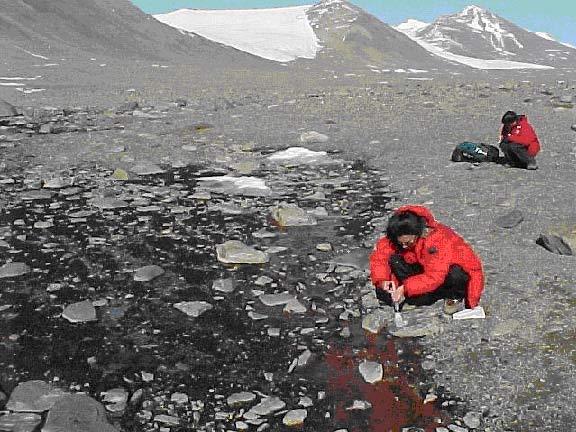Add Water, Life Stirs

Microbes freeze-dried in Antarctica for two decades sprang to life when scientists added water, revealing yet another extreme ecosystem that shows life's incredible resiliency.
The dormant bacteria lay in a mat in a glacial stream bed that hadn't been wet for about 20 years. Scientists diverted water into the channel to see what would happen.
"These mats not only persisted for years when there was no water in the streambed, but blossomed into an entire ecosystem in about a week. All we did was add water," said Diane McKnight, a researcher at the University of Colorado at Boulder.
"This was something we did not anticipate," McKnight said.
It's not the first time hardy microbes have been found in harsh conditions, of course. Other simple life forms thrive in boiling soup, under ice shelves, and even in rock deep inside Earth's crust. Earlier this year, scientists revived bacteria that had been frozen for 32,000 years.
In the new study, the researchers were surprised how quickly the creatures were re-animated.
The river channel is one of several that link glaciers to frozen lakes in a valley below. The dormant microbes are cyanobacteria, which are gathered in a thin, rubbery, mat-like structure that can spread several meters across the streambed surface. Like plants, they rely on photosynthesis to survive.
Sign up for the Live Science daily newsletter now
Get the world’s most fascinating discoveries delivered straight to your inbox.
"After we diverted the water into the channel, photosynthesis began the same day and the mats became abundant within a week," McKnight said. "This showed us that they had been preserved in a cryptobiotic state."
Cyanobacteria have changed little since they emerged on the early Earth, scientists believe, and they're thought to have been among the first life forms on the planet.










